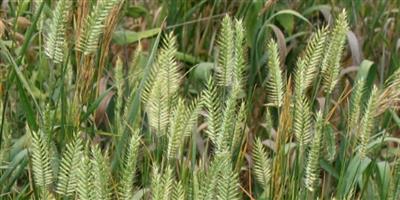(GLASGOW, Mont.) – An effort to improve abandoned homestead lands in Northeast Montana is meeting with success.
Crested wheatgrass was planted in fields as a covering crop to keep the soil in place when homesteaders abandoned their dreams. “It served its purpose in the 1920s and 30s, however, 80 to 100 years later it is not very productive. Many of these abandoned fields are dominated by this grass that provides little to no cover or forage for wildlife,” explained Bureau of Land Management Glasgow Wildlife Biologist Abel Guevara.
The BLM Glasgow Field Office identified sites in Greater Sage-Grouse Priority Habitat Management Areas and is seeking to improve the habitat quality for sage-grouse by converting the lands to a more native grassland ecosystem. The Crested Wheatgrass Conversion project also improves habitat for a variety of grassland birds, sharp-tailed grouse, big game animals and livestock.
The BLM will seed the 600-acre Mooney Coulee and 430-acre North Tomato Can Units with a native grass mixture this fall. The areas were treated with prescribed fire and herbicide in 2015. A second herbicide treatment was applied this past spring. By the end of 2017, a total of 2,000 acres will have been converted from crested wheatgrass to native grasses.
In spring 2014 the Tomato Can Unit was the first conversion project initiated. The 375 acres of crested wheatgrass was initially burned in the early spring. It was then sprayed with herbicide once the crested wheatgrass was partially grown and sprayed a second time the following spring. The area was seeded using a no-till method during the fall of 2015 with a native grass mixture obtained from the BLM National Seed Warehouse. Once seeded, project units are rested from grazing for two years to allow newly seeded native plants to grow.
“Bringing a project like this to successful completion requires the involvement of a number of people representing a variety of disciplines,” said Guevara. “Fuels Specialist John Seeman has been spearheading the prescribed fire implementation, while the Glasgow Field Office has coordinated the habitat conversion portion of the project.” Grazing permittees are vital to the success of projects and without their support, the projects would not have been able to be completed.
To implement the prescribed burns, the BLM utilized Wildland Firefighters from Lewistown, Miles City and Billings, the Montana Department of Natural Resources and Conservation and the U.S. Fish and Wildlife Service. In addition, they received real-time weather forecast support from the National Weather Service.
Source: BLM Glasgow




